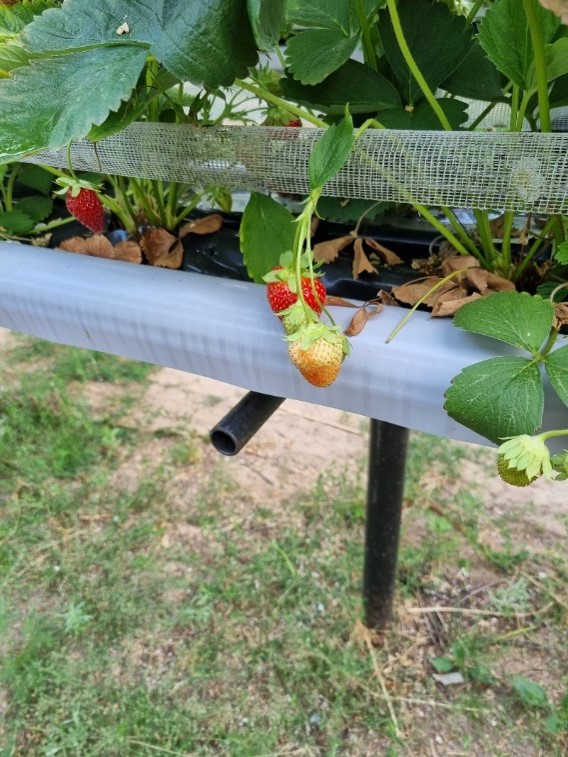How to control strawberry taste
How can the farmer influence the taste of the strawberry? This question often comes up during the growing season. Many factors affect the taste, some of which the farmer can influence beforehand or during the growing season. Let’s see how to control strawberry taste at your farm.
Plant variety
Different varieties taste differently. A strawberry should of course taste like a strawberry, but the propagator can have other goals in variety breeding. They can for example aim for marketability, a high yield level or good disease resistance. Plants varieties with different properties, produce berries with different tastes. Which factors are valued most, varies per market. In Finland for example, buyers value the taste and the red colour of the berry over the size.
Picking ripeness
Sometimes the berries may have to be picked at a stage that benefits and prolongs their shelf life. If the berry is a little on the overripe side, it won’t last long in the box. Weak shelf life is especially a problem if the berries have to be transported far.
High temperatures also influence the shelf life and cause berries to ripen faster after picking. Growers in warm areas should not harvest their berries when they are too ripe, because they might not last long enough to make it to the market.
That’s why growers sometimes choose to pick their berries before they are fully ripe. It does, however, influence the taste of the berries when the consumers get them. A berry that is picked when it’s fully ripe usually tastes sweeter.
Yield
If the berries ripen quickly, at the same time and the number of ripening berries is large, sometimes their taste may suffer in the initial ripening stage. When a plant has a lot of berries on it, it distributes the sugars unevenly. This is usually corrected when the first berries have been picked and the plant can direct its energy to a smaller number of berries at one time.
So, in other words, a high yield in a short period of time causes berries from the same plants to taste differently.
Fertilization
The level of potassium influences the number of sugars and acidity, which in turn directly affect the taste. Nitrogen also affects the taste, especially in nitrate form. A higher level of nitrogen makes berries taste sweeter. However, too much nitrogen can reduce the quality of the crop. It’s not only the sugars within the berry that influence the taste. The acidity is also a very important part of it.
When you want to influence the taste of your berries through your fertilisation strategy, you should keep in mind that different varieties have different needs. Requirements for example for nitrogen-potassium and calcium-potassium ratios vary.
In general, sufficient nutrients must be available. Please also remember that the level of conductivity within the substrate affects the plant’s water and nutrient uptake.
Night and day temperature
Temperatures also influence the taste of strawberries. Cool night temperature increases the sweetness of the berries.
According to research, cool night temperatures and high daytime temperatures increase both the sweetness and the acidity of the berry. In tunnels, the temperature can be adjusted by opening doors and sides, or through misting and fans. Appropriate evaporation, especially during the day, improves the conditions of the plant and helps the transport of nutrients to the plant.
Read more about this in our related article on planning your irrigation strategy in tunnels.
Technical factors of cultivation
Small factors can have a surprisingly large effect on the taste of the berries.

The picture above shows how the stem of the berry cluster has bent against the support net. This damages the transportation of nutrients within the plant to the berries. The berries in this picture may ripen and look good, but their taste is negligible.
Installing the support network in the spring must therefore be done with great care to avoid these situations.
Pests
For example, field, strawberry and berry bugs can cause taste damage to strawberries. In addition, some plant protection agents can affect the taste of the fruits as well.
Irrigation technique: excessive watering
Overwatering causes the leaching of nutrients and can therefore affect the taste of the berries. If the substrate is constantly too wet, the development of the root system is weak. This can cause, for example, disease pressure. A weak root system can also cause problems with the uptake of nutrients.
Continuous overwatering is not recommended. Choosing a sufficiently airy growing medium is important. In addition, over-compaction during the planting phase weakens the result of the harvest season and the taste of the berries.
Seedling quality
If the seedling quality is poor for one reason or another, the development of the root system may be weak. This may also affect the quality of the berries. A grower can’t always know, for example, the quality of the mother seedling material or the challenges of the previous growing season at the nursery. When the seedlings arrive at the farm, it is necessary to check the quality of the seedlings before planting, and any problems must be reported to the nursery immediately. We recommend always using high-quality seedlings to get the best result.
Finally, on a more general note, monitoring the vegetation during the growing season is very important. With small farms, various hand-held meters may be sufficient for monitoring. As the surface area of the cultivation site increases, you should consider a more advanced sensor system for EC, humidity and temperature monitoring.
In addition, it can be wise to regularly use laboratory services. It can be worth having regular analyses of leaves, press fluid and drainage water. Continuity in monitoring in all forms will increase the amount of information, and therefore the amount of control in the future.
